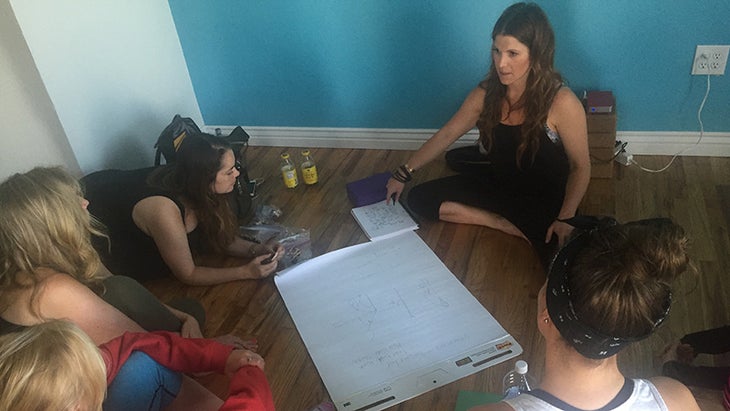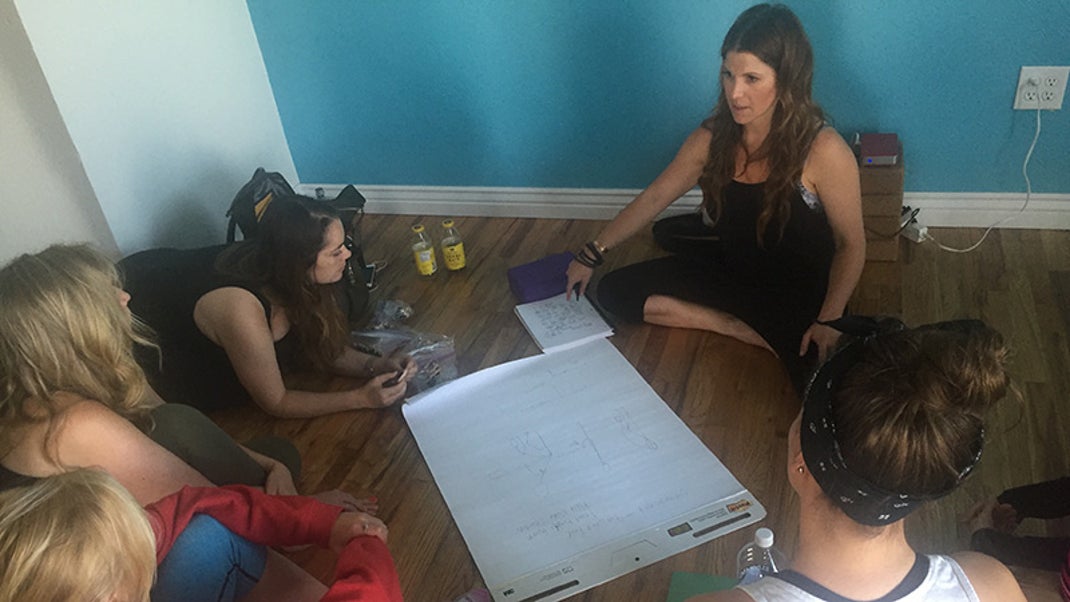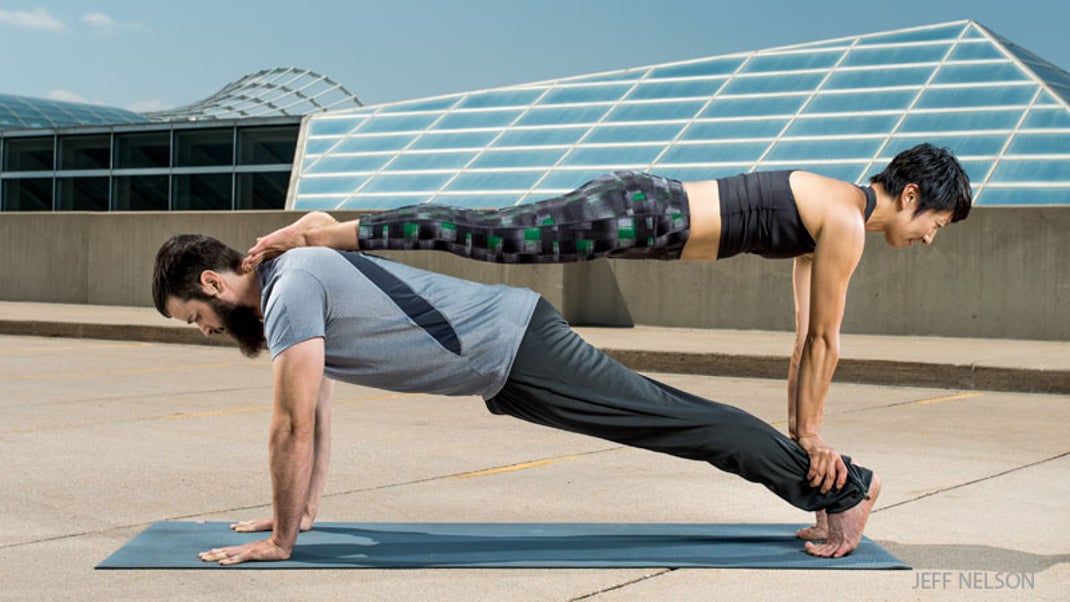I took a Mentor Revolutionized My Teaching in 4 Days workshop and it completely changed my teaching! Now I can help more people reach their goals and succeed. Mentor Revolutionized My Teaching in 4 Days is the best way to improve your skills as a teacher or mentor.
When Beth Jaworski, 27, graduated from her 200-hour yoga teacher training 2 years ago, she felt fairly confident she was ready to teach. “The bulk of our training consisted of learning how to sequence in the style of the studio chain, which was nice from the perspective that as a new teacher, it gave me a set sequence that I could use as much as I wanted to and simply make small changes and adjustments to that template as I went along,” Jaworski says.
However, when it came to learning how to cue—and diving deeper into anatomy—Jaworski says she felt a lot less certain. So she did what other new teachers in her shoes often do: She started memorizing certain cues and imitating teachers she liked.
“I didn’t know how to be creative and worse, I didn’t know how to look at my students’ bodies so I could adjust my cues based on what I was seeing,” she says. “I stuck with my canned cues and eventually ended up with some consistent students, so I figured I was doing something right—or at least not terribly wrong.”
Then Jaworski signed up for Alexandria Crow’s YogaPhysics 301. Crow designed the yoga teacher development and mentorship workshop for teachers just like Jaworski—those who have at least one 200-hour teacher training under their belt and want to take their skills to the next level.
“I truly believe that you can teach from a place of wisdom, even if you are a new teacher,” Crow says. “My goal in mentoring is to help teachers understand what they’re teaching and why they’re teaching it. That’s when the wisdom comes through.”
After Crow’s 4-day workshop, Jaworski says her entire approach to teaching has changed. “I look at class planning completely differently, and I now know how to look at my students and cue them based on what I’m seeing,” she says. “I feel so much more confident in what I’m saying because now I know why I’m saying it.”

5 Lessons from a Yoga Teaching Mentorship
Here, Jaworski shares her top five takeaways after working with Crow—lessons that are now informing her teaching and inspiring her to keep studying.
Lesson #1: Yoga is now.
This first sutra is arguably the reason why any of us do yoga—yet it’s often forgotten about entirely. The beauty of embracing this concept is that it has so many applications, Jaworski says. From a teaching perspective, this has helped Jaworski focus on the students in her class and her specific and varying needs, she says. It’s also an important message to convey to your students, Crow adds, as teaching them to be in the present moment is a surefire way to help them feel embodied and experience the real gift of yoga.
Lesson #2: Everyone is a magical unicorn.
No two bodies are alike, which means there’s a good chance that showing up to teach a class with a set of memorized cues isn’t going to help the majority of your students, says Jaworski, whose “ah-ha” moment happened when Crow asked her to do a simple psoas stretch.
“I realized that I didn’t have a clear sense of the difference between discomfort and pain in my own body, which means teaching other people who have their own varying thresholds of pain and a wide range of anatomical issues going on would be near impossible,” she says.
“One of my biggest takeaways was the realization of how important it is to tune in to myself on and off my mat in order to be able to pay attention to what’s going on right now in my own body, and in my students’ bodies.”
Lesson #3: Know you’re why.
It’s not only crucial to know what you’re teaching, but also why you’re teaching it, Crow says. “I question why I’m a teacher every day,” she says. “There’s something intoxicating about being a teacher. You get to stand up in front of people and tell them what to do. That is power. But if you do that in a way that is blind, it’s dangerous.” What’s more, Jaworski says that drilling that question down even further and being able to explain why she’s teaching certain poses and why she’s giving certain cues is the secret to avoiding the boredom she once felt when she taught.
Lesson #4: It’s OK to throw out the rules and start playing.
Jaworski’s yoga teacher training, like so many, included a number of teaching guidelines that she was urged to follow, particularly when it came to sequencing. While new teachers like Jaworski tend to find this helpful, Crow suggested she try her own sequencing strategy—as long as she could be intentional about it (read: as long as she could answer the “why?”). For Jaworski and many of Crow’s other mentees, throwing out the rules means getting back to basics. “It’s clear to me now that I can make basic poses challenging for more advanced students—and that teaching the basics when I’m just starting out is the secret to becoming a better teacher,” Jaworski says.
Lesson #5: Go easy on yourself.
When you start figuring out these new ways of approaching your teaching, it can be tempting to beat yourself up for the crappy classes you’ve taught in the past. But Crow urges her mentees not to dwell on that and rather to focus on doing better now. Jaworski says that she has a feeling this is another key to becoming a better teacher. After all, there’s always something to learn—and being in the present moment, able to embrace what is with open arms, is yoga.
Conclusion:
These are just a few of the lessons that Jaworski learned from her time spent with Crow, but they’re some of the most important. In order to become a better teacher, it’s crucial to tune in to yourself and your students, question why you’re teaching what you’re teaching, and be willing to let go of the rules (at least sometimes). And finally, remember to be kind to yourself along the way. There is always more to learn in this ever-evolving yoga journey. Namaste!



